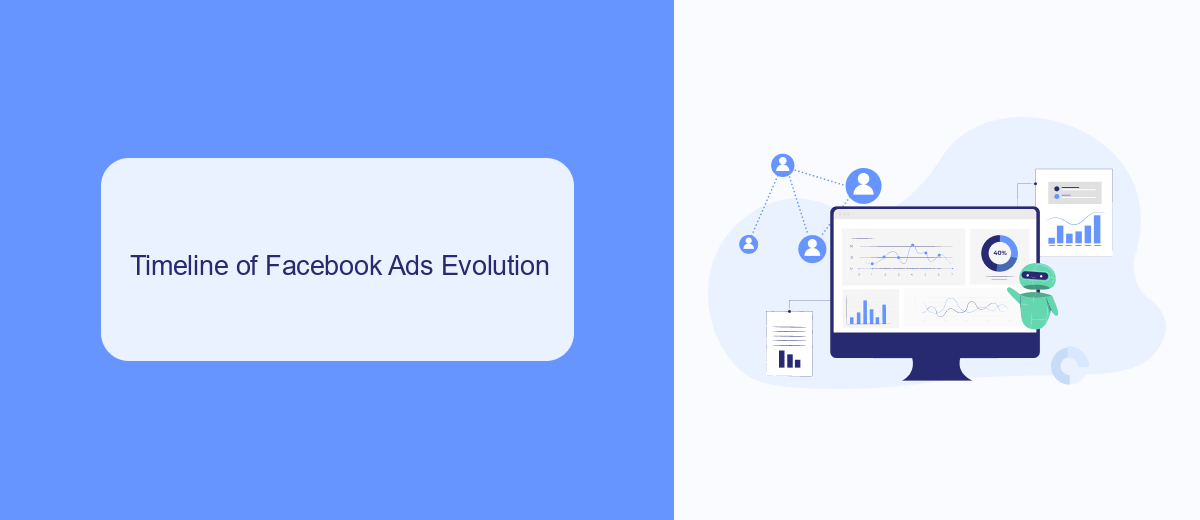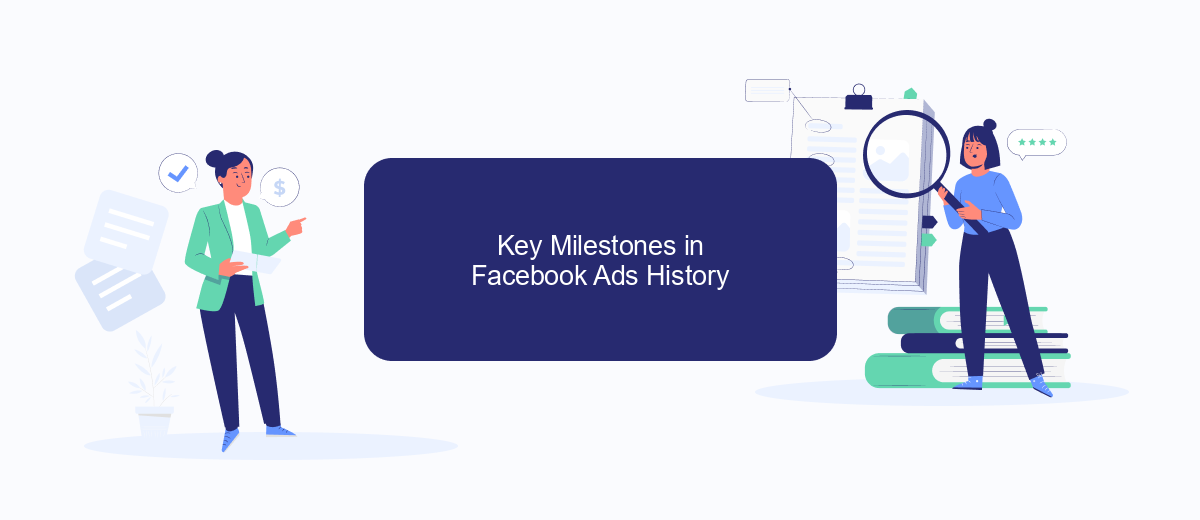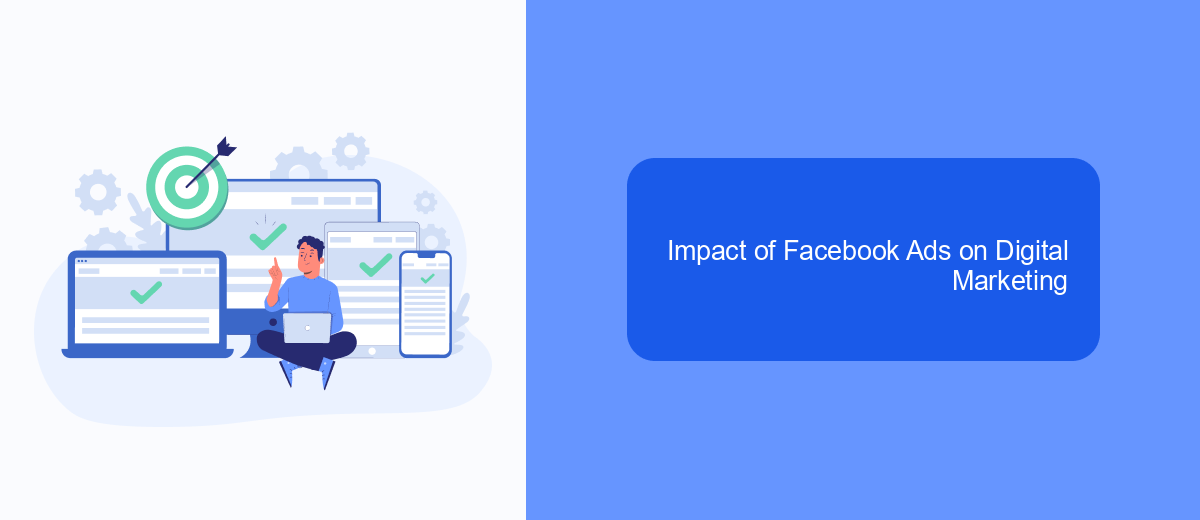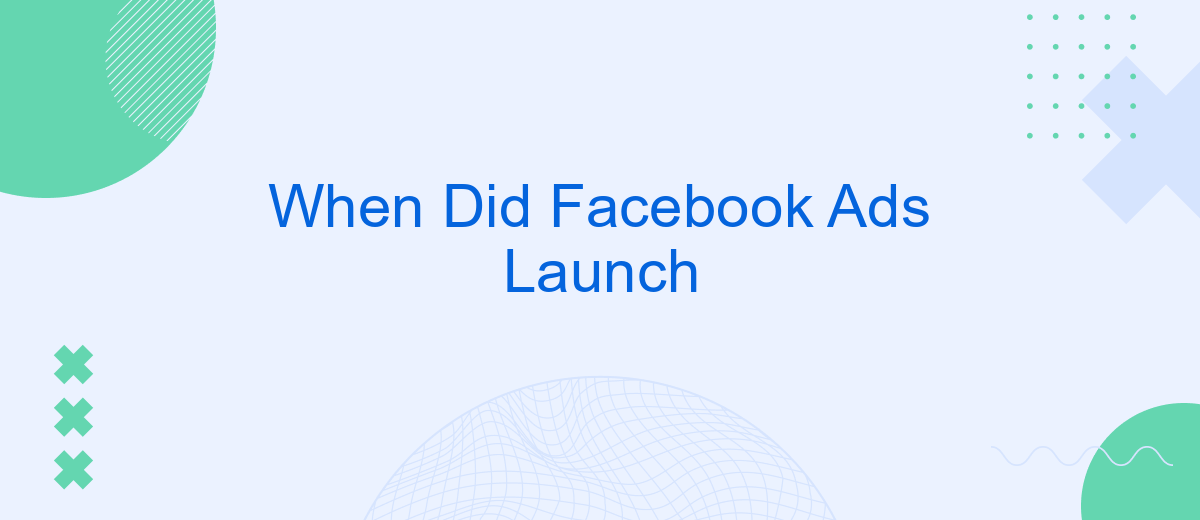Facebook Ads have revolutionized the digital marketing landscape, allowing businesses to reach targeted audiences with unprecedented precision. Since its inception, Facebook's advertising platform has evolved significantly, offering a wide range of tools and features. This article delves into the history of Facebook Ads, tracing their launch and development over the years to understand how they became a cornerstone of modern marketing strategies.
Facebook Ads Platform Launch Date
Facebook Ads officially launched on November 6, 2007, marking a significant milestone in the world of digital advertising. This platform allowed businesses of all sizes to reach their target audiences with unprecedented precision and efficiency. Over the years, Facebook Ads has evolved, offering a variety of tools and features to help advertisers achieve their marketing goals.
- Launch Date: November 6, 2007
- Initial Features: Basic targeting options, CPC (Cost Per Click) pricing
- Current Features: Advanced targeting, retargeting, A/B testing, dynamic ads
- Integration Tools: SaveMyLeads for seamless CRM and ad campaign integration
With the introduction of Facebook Ads, businesses gained a powerful platform to connect with potential customers. Over time, the platform has become more sophisticated, offering advanced analytics and integration options. Services like SaveMyLeads simplify the process of integrating Facebook Ads with other tools, ensuring that businesses can manage their campaigns efficiently and effectively.
Timeline of Facebook Ads Evolution

Facebook Ads launched in November 2007, marking the beginning of a new era in digital advertising. Initially, the platform offered basic targeting options and simple ad formats. Over the years, Facebook has continuously evolved its advertising capabilities, introducing features like the Facebook Pixel in 2013, which allowed advertisers to track user behavior and optimize their campaigns more effectively. By 2015, Facebook introduced Dynamic Ads, enabling advertisers to automatically promote relevant products to users based on their interests and online activities.
In recent years, Facebook Ads has integrated with various third-party services to enhance its functionality. One notable service is SaveMyLeads, which simplifies the process of connecting Facebook Lead Ads with other platforms. SaveMyLeads automates the transfer of lead data to CRMs, email marketing tools, and other applications, ensuring that businesses can efficiently manage their leads and improve their marketing efforts. This evolution of Facebook Ads, coupled with powerful integrations like SaveMyLeads, has solidified its position as a critical tool for digital marketers worldwide.
Key Milestones in Facebook Ads History

Facebook Ads have evolved significantly since their inception, introducing numerous features and improvements that have shaped the digital advertising landscape. These key milestones highlight the journey of Facebook Ads from their early days to the powerful marketing tool they are today.
- 2007: Facebook Ads officially launched, allowing businesses to create ads targeted to specific demographics.
- 2009: Introduction of the "Like" button, enabling users to engage with ads and pages, providing valuable feedback for advertisers.
- 2012: Launch of mobile ads, expanding the reach of advertisers to mobile users and marking a significant shift in ad strategy.
- 2014: Introduction of video ads, allowing businesses to create more engaging and dynamic content.
- 2017: Launch of Facebook Stories Ads, offering a new, immersive format for advertisers to connect with their audience.
- 2020: Integration with SaveMyLeads, simplifying the process of connecting Facebook Ads with other marketing tools and CRM systems.
These milestones reflect Facebook Ads' continuous innovation and adaptation to the changing digital landscape. With each new feature and integration, like the partnership with SaveMyLeads, Facebook Ads have become an indispensable tool for businesses looking to reach and engage their target audience effectively.
Impact of Facebook Ads on Digital Marketing

Since their launch, Facebook Ads have revolutionized digital marketing by providing businesses with unprecedented targeting capabilities and data-driven insights. Advertisers can now reach specific demographics, interests, and behaviors, making their campaigns more efficient and effective.
One of the significant impacts of Facebook Ads is the democratization of advertising. Small businesses and startups can compete with larger companies by leveraging precise targeting and cost-effective ad placements. This has leveled the playing field, allowing businesses of all sizes to reach their desired audience.
- Enhanced targeting options
- Improved ROI through data analytics
- Integration with other marketing tools
- Cost-effective advertising solutions
Moreover, services like SaveMyLeads have made it easier for businesses to integrate Facebook Ads with other marketing and CRM tools. By automating lead generation and data transfer, SaveMyLeads helps businesses streamline their marketing efforts and improve overall efficiency. This seamless integration ensures that businesses can maximize the impact of their Facebook Ads campaigns.
Future Trends in Facebook Ads
As we look to the future of Facebook Ads, several trends are poised to shape the landscape. One significant trend is the increasing use of artificial intelligence and machine learning to optimize ad targeting and personalization. These technologies enable advertisers to deliver more relevant content to users, enhancing engagement and conversion rates. Additionally, the rise of augmented reality (AR) and virtual reality (VR) ads is expected to provide immersive experiences that captivate audiences in new and innovative ways.
Another key trend is the growing importance of seamless integrations with other marketing tools and platforms. Services like SaveMyLeads are becoming essential for businesses looking to streamline their marketing efforts by automating the transfer of leads and data between Facebook Ads and various CRM systems. This not only saves time but also ensures that valuable leads are promptly followed up on, improving overall campaign efficiency. As these trends continue to evolve, staying ahead of the curve will be crucial for maximizing the impact of Facebook Ads.
FAQ
When did Facebook Ads launch?
What was the initial purpose of Facebook Ads?
How can businesses manage and automate their Facebook Ads campaigns?
What are some key features of Facebook Ads?
Can small businesses benefit from using Facebook Ads?
Personalized responses to new clients from Facebook/Instagram. Receiving data on new orders in real time. Prompt delivery of information to all employees who are involved in lead processing. All this can be done automatically. With the SaveMyLeads service, you will be able to easily create integrations for Facebook Lead Ads and implement automation. Set up the integration once and let it do the chores every day.
